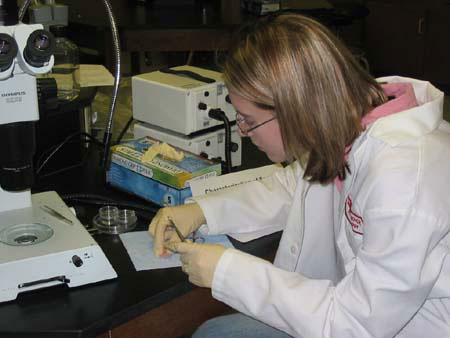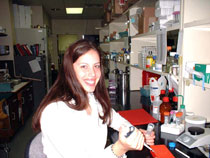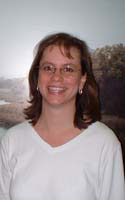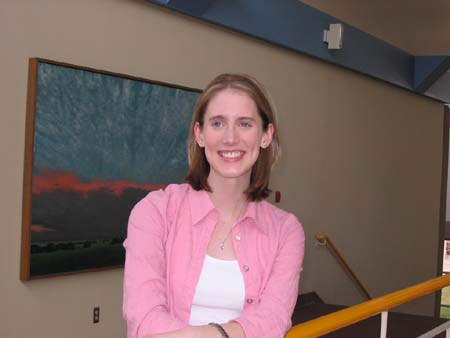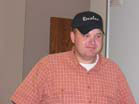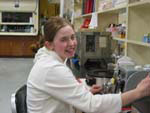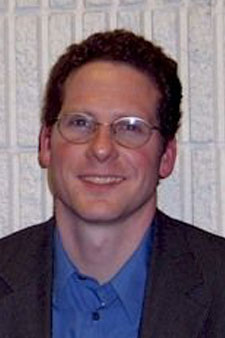Welcome to Dr. Cupp's Lab
Let me introduce you to our laboratory members, collaborators and alumni.
Dr. Cupp's Laboratory Members
Graduate Students

Mariah Hart
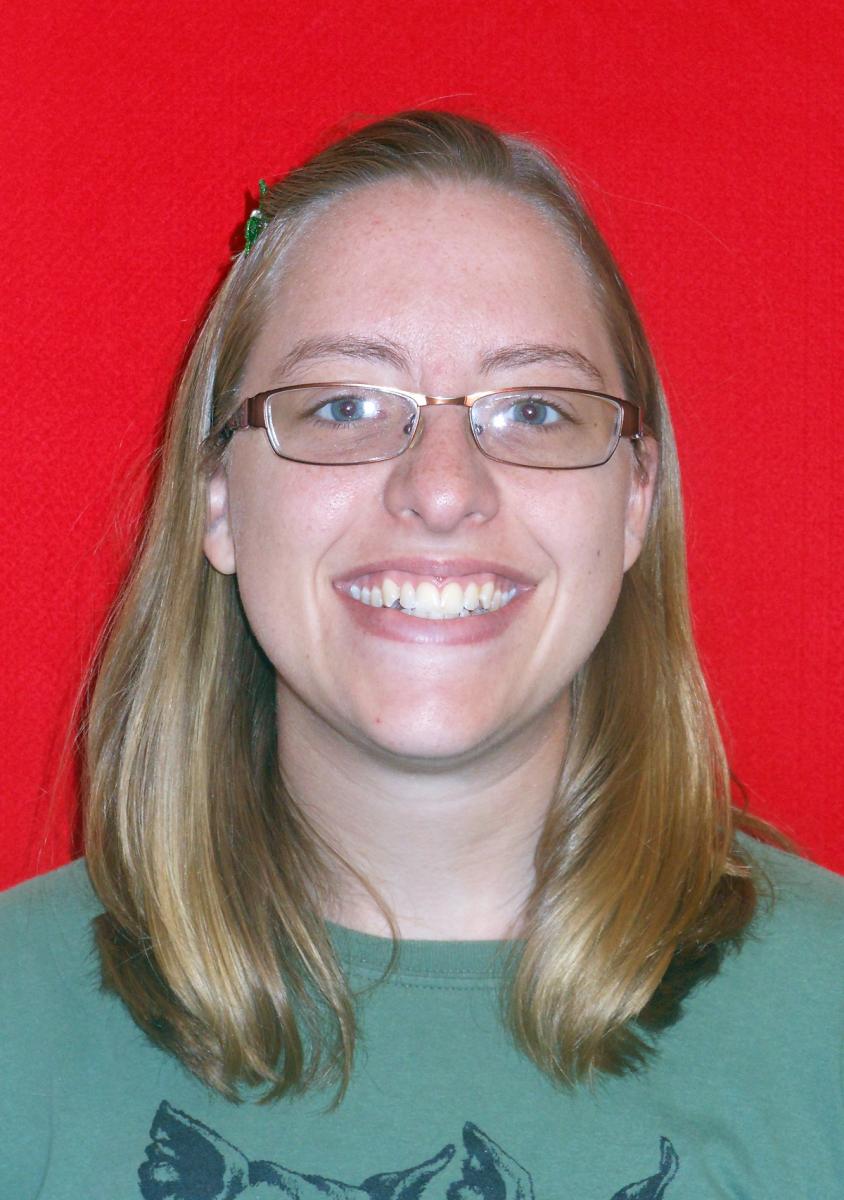
Sarah Nafziger

Megan Neilson

Shelby Springman
Undergrad Students

Undergrad

Undergrad
Staff

Lab Manager
Secretary
Dr. Cupp's Laboratory Collaborators
Rick Funston
Dr. Lane Christenson
Dr. Cupp's Laboratory Alumni
Rebecca C. Bott
Graduate Student
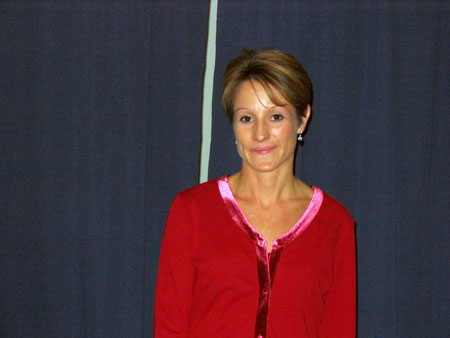
Bio and Accomplishments PDF (? kb)
Heidi Harris
Graduate Student
Deb Clopton
Research Analyst
Michelle Baltes-Breitwish
AS Ellsworth Community College, Iowa Falls, IA
Graduate Student
Bio and Accomplishments PDF (? kb)
Daniel Larson
Graduate Student
Jeremy Martin
Dr. Rick Rasby
PhD student with Dr. Rick Funston and Dr. Andrea Cupp
Renee (Pohlman) McFee
Graduate Student
Bio and Accomplishments PDF ? kb)
Shantille Kruse
Graduate Student
Dr. Cupp's Laboratory UCARE Students

Natalie Hart
Robyn Longfellow
Dr. Cupp's Laboratory Undergrad Workers

Stephanie Glans

Kylie Benton
Undergrad Worker (Rat Room Maintenance, Lab Maintenance)
Dr. Cupp's Laboratory Special Guests
Lane Christenson
Kansas City, KS
Derek McLean
Washington State University
Pullman, Washington
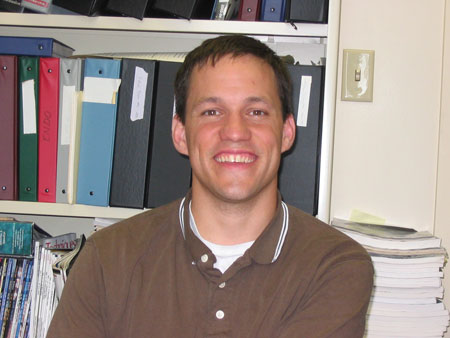
Jesse Andres
Asland, MT
Jesse received an American Physiological Society Fellowship to work with scientist's during the summer on a research project. He worked with Joe Ford (US Meat Animal Research Center, Clay Center, Nebraska) and Andrea Cupp on a research project determining differences in several testis cellular markers between European Crossbred and Meshian pig testis. With this project he learned how to image slides, quantitate difference in intersitial and seminiferous tubule areas. Furthermore, he learned many different laboratory techniques, and participated in many other graduate student projects that were conducted during the summer of 2004. We really enjoyed having Jesse with us for a summer.

Bridgette Kirkpatrick
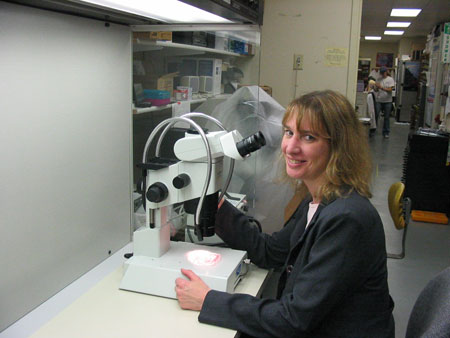
Melissa Pepling
Syracuse, NY
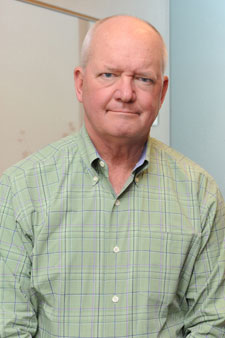
John Nilson
Pullman, Washington
Research Focus
The Research Focus of the Cupp laboratory is to study the molecular and cellular regulators of gonadal development and function. Primarily, our laboratory is investigating a paracrine growth factor- Vascular Endothelial Growth Factor (VEGF) and its involvement in: 1) sex-specific vascular development during embryonic gonadal development; 2) follicular maturation; and 3) ovulation in the female and; 4) its role in spermatogenesis.
Vascular Endothelial Growth Factor (VEGFA)
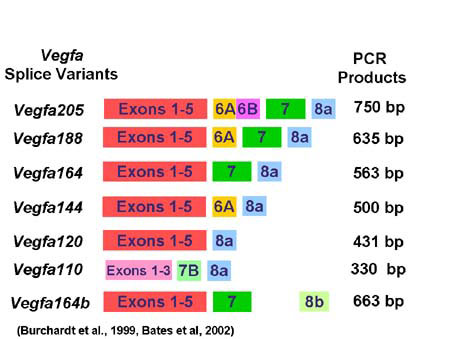
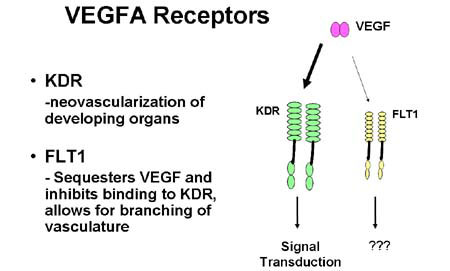
Early Gonadal Development: The reason that we are studying early development of structures (follicles, vasculature and seminiferous cords) in the testis and ovary is that many causes of adult and potentially domestic livestock infertility can be traced back to abnormal cellular differentiation during gonadal development. For example, in the past twelve years there has been an increase in male infertility cases in several Industrialized Countries (including the US). These men are infertile due to several different reasons from testicular cancer (increased incidence in men under 20 years of age) to low sperm count. Most of these cases can be attributed to potential abnormal differentiation of cells during development of the embryonic or fetal testis.
We have two projects one in the ovary and the other in the testis which are studying the regulation of angiogenic factors during ovarian or testicular embryonic differentiation.

1) Role of angiogenic factors in morphological testis differentiation.
Development of the initial cellular structures that constitute a testis occurs during embryonic development. Formation of the testicular cords (or seminiferous cords) is the first visual indication that the gonad is a testis. During the differentiation of an indifferent (non-differentiated) gonad into a testis sex-specific vasculature develops around the seminiferous cords in a pattern different from vascular development in the ovary.
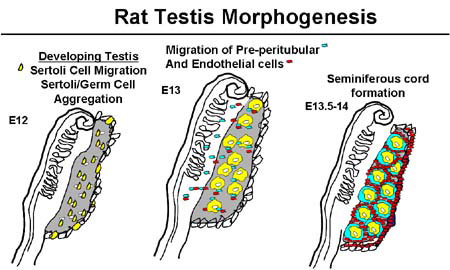
In this project we are studying how vasculature formation affects testis morphogenesis or formation of seminiferous cords. We use both rat and mouse models in our research. Currently, we have data demonstrating that VEGFA is involved in Seminiferous cord formation and sex-specific vascular development. Either inhibition of VEGF or additional of large amounts of VEGF isoforms both arrest seminiferous cord formation and affect vascular density (inhibition of VEGF reduces vascular density while addition of angiogenic isoforms increases vascular density). We believe that absence of VEGFA inhibitory isoforms and presence of angiogenic isoforms may aid in endothelial cell migration and development of sex-specific vasculature and testis cord formation. This project is funded by a grant from NIH.
2) Role of angiogenic factors in morphological ovarian differentiation (ie- sex-specific vascular develoment and primordial follicle formation).
In this project we are studying the role of Angiogenic factors in the formation of vasculature and primordial follicle development the embryonic and postnatal rat & mouse ovary. In addition to evaluation of VEGF. Portions of this project were funded by Women in Science Grant from NSF-Epscore.
3) Identification of growth factors involved in follicle progression and ovulation.
We are utilizing the cow as a model system to identify paracrine growth factors involved in the process of follicle maturation and ovulation in the beef cow. The beef cow is an excellent model for humans since the cow is mono-ovulatory, the ovary is similar in size to women's ovaries and the pattern of endocrine hormones is also very similar. In this project we are trying to understand the mechanisms of ovulation by identifying paracrine growth factors, both angiogenic and non-angiogenic which are induced during the process of ovulation. By identifying these factors we hope to improve synchronization of ovulation which would lead to more efficient estrous synchronization and improved IVF techniques. This project is funded through state and regional USDA Hatch & Animal Health Funds.
4) Applied Research to development management practices to increase male or female reproductive efficiency and fertility in cattle.
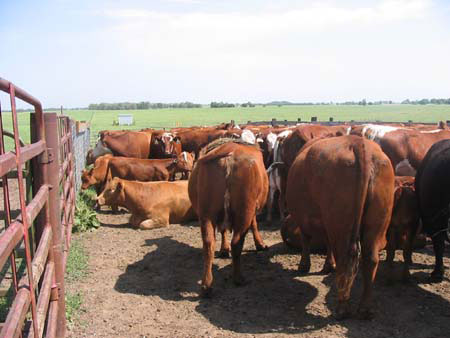

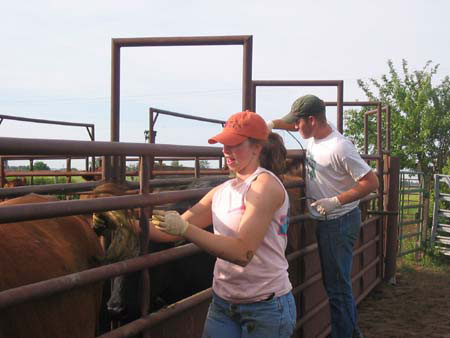
- this research is conducted mainly in my lab but we have some great collaborators- Bob Cushman (USMARC), Brett White (UNL), Jennifer Wood (UNL), and Lane Christenson (UKMC) that are working with us on the effect of level of progesterone on oocyte competence and fertility project.
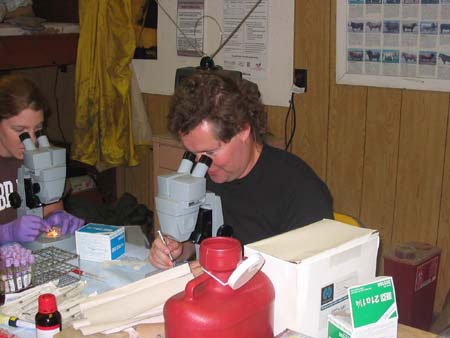

Bob Cushman searching for oocytes Brett White searching for oocytes and a come-back to Bob's comments.
Research Centers and Facilities
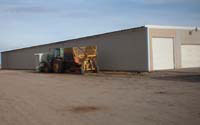
Cow/Calf Unit - Mead, NE
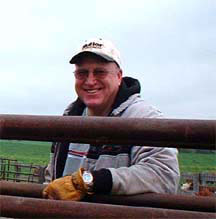
Karl Moline - Cow/Calf Manager

Jeff Bergman - Ag Research Technician

Cow/Calf Unit - Group Picture
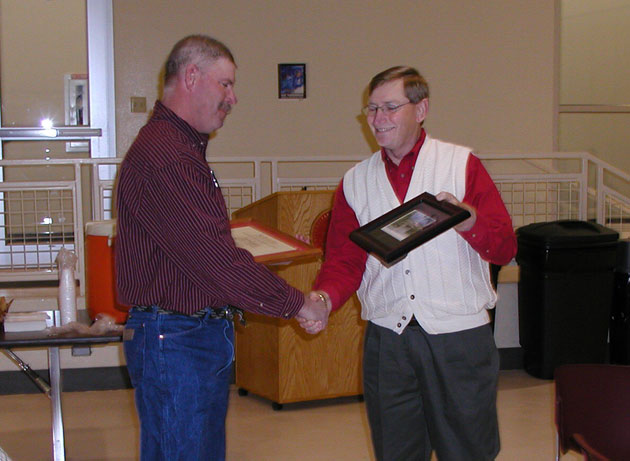
Don Beermann presenting Jeff Bergman the Outstanding Office/Service Award in Dec 2002
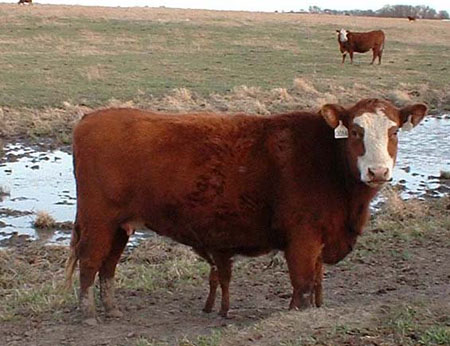
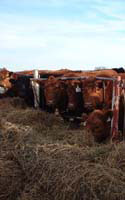

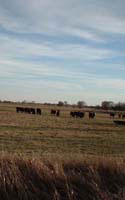

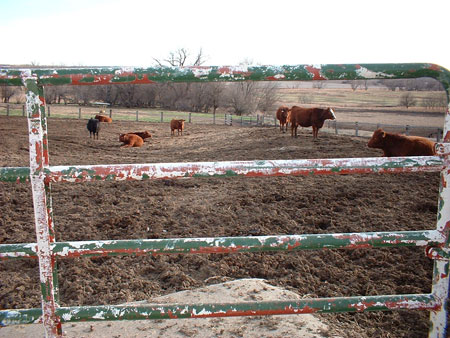


Publications and Meetings
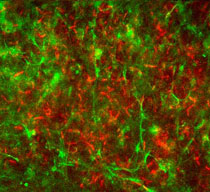
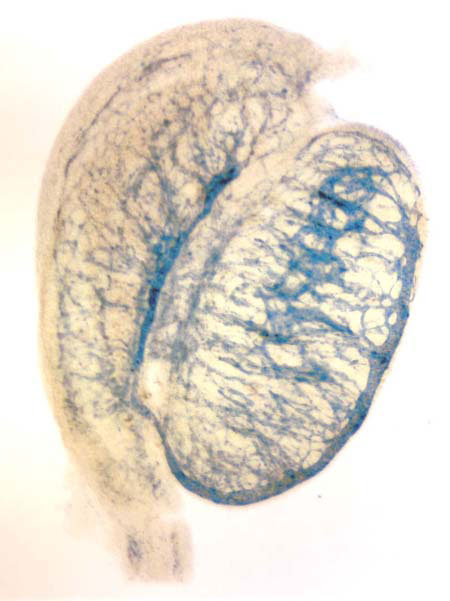
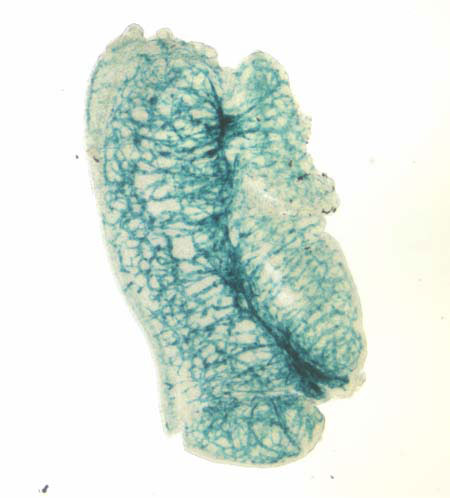
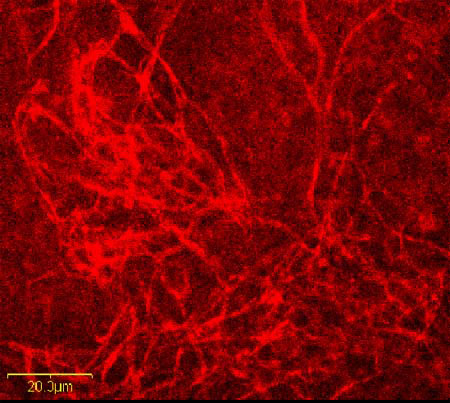
Publications Since 2006
Bott RC, McFee, R M, DT Clopton, CF Toombs and AS Cupp. Vascular Endothelial Growth Factor (VEGFA) and Kinase Domain Region Receptor Are Involved in Both Seminiferous Cord Formation and Vascular development During Testis Morphogenesis in the Rat. Biol Reprod 2006 Aug; 75:56-67.
Martin JL, Cupp AS, Rasby AJ, Hall ZC, Funston RN. Utilization of dried distillers grains for developing beef heifers. J. Anim Sci. 2007: Sep 85(9): 2298-303. Epub 2007 May 25.
Harris HL, Cupp AS, Roberts AJ Funston RN. Utilization of soybeans or corn milling byproductsin beef heifer development diets. J Anim Sci. 2008 Feb; 86(2): 476-82. Epub 2007 Oct 16.
Bott, RC, DT Clopton, AS Cupp. A proposed Role for VEGF Isoforms in Sex-Specific Vasculature Development in the Gonad. (2008); Reproduction in Domestic Animals. Vol 43(Suppl 2): July; 310-316. PMCID: PMC2708602.
Cupp AS, J. Matthews, E. Huff-Lonergan, D. Moody Spurlock, and D. McLean. Cell Biology Symposium: The Role of MicroRNA in cell Function. J Anim Sci. 2009 Apr; 87(14 Suppl): E19-20. Epub 2008 Nov 7.
Cushman RA, MF Allan, LA Kuehn, WM Snelling, AS Cupp, HC Freetly. Evaluation of antral follicle count and ovarian morphology in crossbred beef cows: Investigation of influence of stage of the estrous cycle, age, and birth weight. J Anim Sci. 2009 June; 87(6): 1971-80. Epub 2009 Mar 13.
McFee RM, Artac RA, McFee RM, Clopton DT, Smith RA, Rozell TG, Cupp AS. Inhibition of vascular endothelial growth factor receptor signal transduction blocks follicle progression but does not necessarily disrupt vascular development in perinatal rat ovaries. Biol Reprod. 2009 Nov; 81(5): 966-77. Epub 2009 Jul 15. PMCID: PMC2770022.
Artac RA, McFee RM, Smith RA, Baltes-Breitwisch MM, Clopton DT, Cupp AS. Neutralization of vascular endothelial growth factor antiangiogenic isoforms is more effective than treatment with proangiogenic isoforms in stimulating vascular development and follicle progression in the perinatal rat ovary. Biol Reprod. 2009 Nov; 81(5): 966-77. Epub 2009 Jul 15. PMCID: PMC27770023.
Martin J, DM Larson, H Stroh, AS Cupp, RN Funston. Effect of dietary crude protein source on hormone and follicle characteristics in beef heifers. J Anim Sci. 2010 Mar; 88(3): 937-42. Epub 2009 Nov 20.
Baltes-Breitwisch MM, RA Ten Broeck, RA Longfellow, RM McFee, DT CLopton, AS Cupp. Neurtralization of VEGF anti-angiogenic isoforms may regulate testis development. Reproduction. 2010 Aug; 140(2): 319-29. Epub 2010 May 10. PMID: 20457593; PMCID: PMC3122080.
Bott RC, Cloptoin DT, Fuller AM, McFee RM, Lu N, McFee RM, Cupp AS. KDR-LacZ-expressing cells are involved in ovarian and testis-specific vascular development, suggesting a role for VEGFA in the regulation of this vasculature. Cell Tissue Res (2010) 342: 117-130. Sep 17. [Epub ahead of print] PMID: 20848132. PMCID: PMC3033580.
Larson, DM, AS Cupp, and RN Funston. Heifer development systems: A comparison of grazing winter range or corn residue. J Anim Sci. 2011 Aug; 89(8): 2365-72. Epub 2011 Apr 8.
Kovar, J L., X Xu, D Draney, AS Cupp, MA. Simpson, and DM Olive. Use of a near infrared labeled etracycline-derivative as a marker of bone deposition for in vivo imagin in mice. Anal Biochem. 2011 Sep 15; 416(2): 167-73. Epub 2011 May 12
Caires K, J de Avila, AS Cupp, and DJ McLean. VEGFA family isoforms regulate spermatogonial stem cell homeostasis in vivo. Endocrinology. 2012 Feb; 153(2): 887-900. Epub 2011 Dec 6. Cover picture for February was from this article. PMCID: PMC3275389.
McFee, RM, T Rozell, AS Cupp. The balance of proangiogenic and antiangiogenic VEGFA isoforms regulate follicle development. Cell Tissue Res. 2012 Sep; 349(3): 635-47. Epub 2012 Feb 10. PMCID: PMC3429770.
McFee, RM, Bott RC, Lu NX, AS Cupp, Role of Angiogenesis in development of the ovary. Reprod Fertil Dev. 2013; 25(2): 333-42.. [Epub ahead of print]. pMID: 23021322. No PMCID because open access.
Lu, N, KM Sargent, DT Clopton, WE Pohlmeier, VM Brauer, RM McFee, JS Weber, N Ferrara, DW Silversides, AS Cupp. Conditional loss of Sertoli and germ cell vascular endothelial growth factor A (VEGFA) isoforms causes alterations in genes regulating spermatogonial stem cell homeostasis in male mice Endocrinology. 2013 Dec; 154(12): 4790-802. doi: 10.1210/en. 2013-1363. Epub 2013 Oct 29. PMCID: PMC3836063
Mao, D, H. Xiaoying, H. Talbott, R Cushman, A Cupp, JS Davis. ATF3 Expression in the Corpus Luteum; Possible Role in Luteal Regression. MOL Endocrinol. 2013 Dec; 27(12): 2066-79. doi: 10.1210/me. 2013-1274. Epub 2013 Nov 6.
Kurz, SG, KL Dennison, NM Samanas, MP Hickman, TL Walker, AS Cupp, and JD. SHull. Ept7 Influences Estrogen Actioni n the Pituitary Gland and Body Weight of Rats. Mamm Genome. 2014 Jan 22.. [Epub ahead of print].
Talbott, H, A Delaney, P Zhang, Y Yu, RA. Cushman, AS Cupp, X Hou, JS Davis. Effects of IL8 and Immune Cells on the Regulation of Luteal Progesterone Secretion. Reproduction. 2014 Mar 31. [Epub ahead of print]
Cupp AS. Sertoli Cell Based Gene Therapy? Biol Reprod. 2014 Jun 18. pii: biolreprod. 114.121996. [Epub ahead of print] PMID: 24943042. Free article (Invited Commentary).
BOOK CHAPTERS
Cupp AS, and MK Skinner. "Embryonic Sertoli Cell Differentiation" in Sertoli Cell Biology. Eds MK Skinner and MS Griswold. 2005; Elsevier Academic Press; San Diego, CA, USA p 43-70.
JOURNAL ABSTRACTS
1) Effect of pre and peri-pubertal feeding of melengesterol acetate (MGA) on testis characteristics in bulls. S. G. Kruse, M. M. Baltes-Breitwisch, J. L. Martin, D. M. Larson, D. T. Clopton, and A. S. Cupp. Accepted J. Anim Sci. 2007; Midwest Section Meetings.
2) Martin, J L, R N Funston, D T Clopton, H L Harris, A S Cupp. Vascular Endothelial Growth Factor (VEGF) 120 but not VEGF164 expression is increased in granulosa cells of bovine dominant follicles due to nutrition. Biol Repro. 2006; 69 (Suppl 1): 342.
3) Ten Broeck RA, DT Clopton, MM Baltes, RC Bott, AS Cupp. Vascular Endothelial Growth Factor (VEGF) isoform 165 increases vascular development in the perinatal rat ovary while inhibition of VEGF receptor 2 (VEGFR2) does not alter vascular development or follicle progression. Biol Repro. 2006; 69 (Suppl 1): 29.
4) Baltes, MM, RA Ten Broeck, RC Bott, DT Clopton, and AS Cupp. Vascular Endothelial Growth Factor (VEGF) 165 tends to increase vascular density during testis morphogenesis and may be regulated by the inhibitory isoform VEGF164b. Biol Repro. 2006; 69 (Suppl 1): 228.
5) Cushman, RA, MF Allan, DT Clopton, SE Echternkamp and AS Cupp. Inhibition of vascular endothelial growth factor signaling blocks primordial follicle activation in bovine ovarian cortical cultures. Biol Repro. 2006; 69 (Suppl 1): 325.
6) Fischer, RL, P. S. Miller, A. S. Cupp, and D. T. Clopton. Effect of increasing dietary crude protein and crystalline amino acids on carcass composition and IGF-I mRNA expression in growing pigs. J. Anim. Sci. 2006; 84 (Suppl 2): 380.
7) Baltes MM, R C. Bott, D T. Clopton, and A S. Cupp. Utilization of Vascular Endothelial Growth Factor Receptor 2 (VEGFR-2)/Lac-Z mice to elucidate the role of Vascular Endothelial Growth Factor (VEGF) on vascular development during gonadal morphogenesis. J. Anim Sci. 2006; 84 (Suppl 2): 211.
8) Longfellow RA, RM Pohlmann, DT Clopton and AS Cupp. Expression of anti-angiogenic Vascular Endothelial Growth Factor (VEGF) 164b during rat ovarian morphogenesis: Potential regulation of VEGF angiogenic isoform function. J. Anim Sci. 2006; 84 (Suppl 2): 212.
9) Martin J, A Cupp, R Rasby and R Funston. Utilization of dried distillers grains for developing beef heifers.J. Anim Sci. 2006; 84 (Suppl 2): 311.
10) Ten Broeck RA, DT Clopton, MM Baltes, AS Cupp. Vascular development within the perinatal rat ovary is not exclusively regulated through Vascular Endothelial Growth Factor Receptor-2 (VEGFR-2) in rat organ ovarian cultures. J. Anim Sci. 2006; 84 (Suppl 2): 210.
11) Harris HL, AS Cupp, RN Funston. Utilization of whole soybeans or corn milling byproducts in beef heifer development diets. J. Anim Sci.2005; 83 (Suppl 2):102.
12) Clopton DT, RC Bott, RA Ten Broeck, AJ Tepfer, MM Baltes, JS Schulz, and AS Cupp. Administration of human chorionic gonadotropin (hCG) alters cellular expression of Vascular Endothelial Growth Factor Receptor-2 (VEGFR-2) in the testes of VEGFR-2 lacZ mice. Biol Reprod 2005; 68 (Suppl 1):437.
13) Baltes MM, RC Bott, AS Cupp. Development of a Sex Determination Laboratory for Undergraduate Students in Reproductive Physiology. Biol Reprod 2005; 68 (Suppl 1):225.
14) Tepfer, AJ, RM McFee, RC Bott, J Schulz, DT Clopton and AS Cupp. Feeding Melengestrol acetate (MGA) to bulls during the peri or pre-pubertal period induces differences in endocrine profiles which may lead to alterations in testis size. Biol Reprod 2005; 68 (Suppl 1): 653.
15) Bott RC, RM McFee, MM Baltes, DT Clopton and AS Cupp. Phosphotidylinositol 3-kinase (PI3 kinase) is a Potential Signal Transduction Pathway for Vascular Endothelial Growth factor (VEGF) Regulation of Embryonic Testis Morphogenesis. Biol Reprod. 2005; 68 (Suppl 1): 98.
16) Kirkpatrick, BL, JL Nicholls, AS Murth, D de Siqueira Pezzo, DT Clopton, AS Cupp. Use of in vitro ovarian organ cultures for undergraduate research projects. Biol Reprod. 2005; 68 (Suppl 1): 220.
17) Bott, RC, D.T. Clopton, and AS Cupp. Inhibition of VEGF Signal Transduction by VEGFR-TKI is through perturbation of proliferation and cell survival pathways and not due to suppression of endothelial cell migration. XVIII Testis Workshop, Seattle Washington, March 2005 abstract 54.
18) Ten Broeck R, DT Clopton, RC Bott, AS Cupp. Expression of Vascular Endothelial Growth Factor (VEGF) mRNA Isoforms- 120 and 164 are coordinately expressed during corpus luteum regression but appear differentially regulated after the LH surge in the bovine pre-ovulatory follicle. J. Anim. Sci. 2005; 83: (Suppl. 2) 227.
19) Bott RC, DT Clopton, RM McFee, and AS Cupp. The sex specific expression pattern of Vascular Endothelial Growth Factor Receptor-2 (VEGFR-2) indicates a potential role for vascular formation in the development of morphogenic structures in both the ovary and testis of VEGFR-2/lacZ mice. Biol Repro 2004; (Suppl 1) 67:133.
20) Clopton DT, RC Bott, RM McFee, and AS Cupp. Cellular expression of Vascular Endothelial Growth Factor Receptor-2 (VEGFR-2) indicates non-angiogenic roles for VEGFR-2 in spermatogenesis and ovulation in the VEGFR-2 lacZ mice. Biol Repro 2004; 67 (Suppl 1):659.
21) McFee, RM, RM Pohlmann, DT Clopton, RC Bott, TG Rozell, AS Cupp. Inhibition of VEGF Signal Transduction Arrests Vascular Development and Blocks Follicle Progression to the Pre-antral Stage in Perinatal Rat Ovaries. Biol Repro 2004; 67 (Suppl 1) 67:292.
22) Bott RC, DT Clopton, RM McFee, and AS Cupp. Induction of Endothelial Cell Migration: A Potential Mechanism for Vascular Endothelial Growth Factor's (VEGF) Action on Neovascularization and Seminiferous Cord Formation During Testis Morphogenesis. J. Anim. Sci. 2004; 82 (Suppl. 2):73.
23) Pohlmann RM, DT Clopton, RM McFee, TG Rozell and AS Cupp. Inhibition of Vascular Endothelial Growth Factor (VEGF) Signaling Blocks Follicle Progression in the Perinatal Rat Ovary. J. Anim. Sci. 2004; 82 (Suppl. 2):233.
24) Harris HL, AS Cupp, RN Funston. Altered reproductive response in beef heifers fed soybeans during late pubertal development. J. Anim. Sci. 2004; 82 (Suppl. 2):235.
25) Cupp AS, McFee RM, Pohlmann RM, Toombs CF, Clopton DT. 2002. Inhibition of vascular endothelial growth factor signaling perturbs seminiferous cord formation and alters development of vasculature during testis morphogenesis in the rat. Biol Repro 2002; 65 (Suppl 1):110.
26) Clopton, DT, CF Toombs, Cupp AS. Vascular Endothelial Growth Factor (VEGF) Expression and Localization Indicates Role in Testis Morphogenesis and Sertoli-Germ Cell Interactions During Embryonic Testis Development. Biol Repro 2001; 64 (Suppl 1):263.
Meetings Attended
Society for the Study of Reproduction
Testis Workshop
American Society of Animal Science
Midwest Section ASAS
Nebraska Physiological Society
Gordon Conference- Reproductive Tract
Ovarian Workshop
Programs attended by Cupp lab membersGenetic Analysis of Mammals
Reproductive Biology Focus Group- description-
Physiology link to Physiology lab webpage
Journal Club- description
